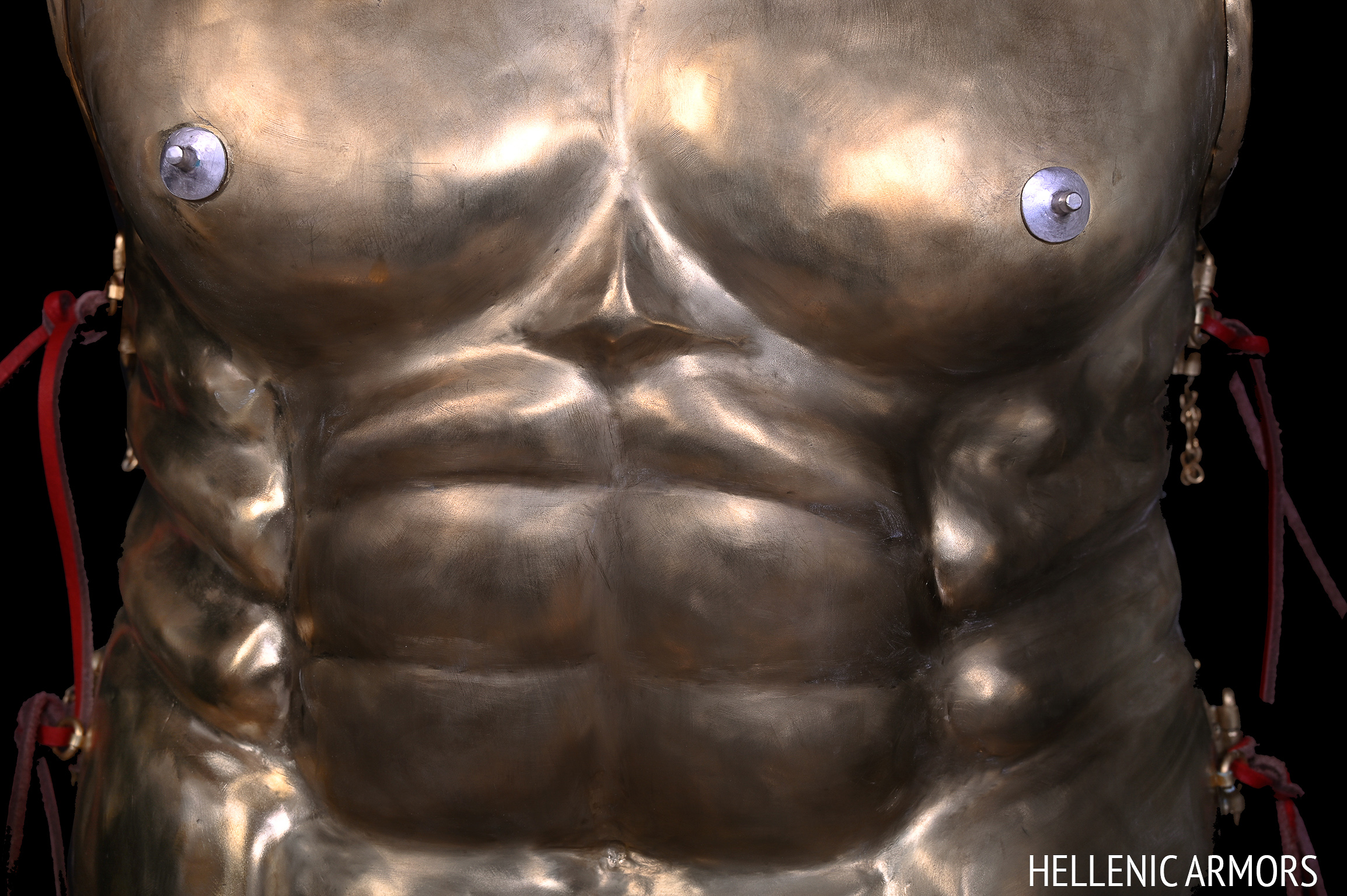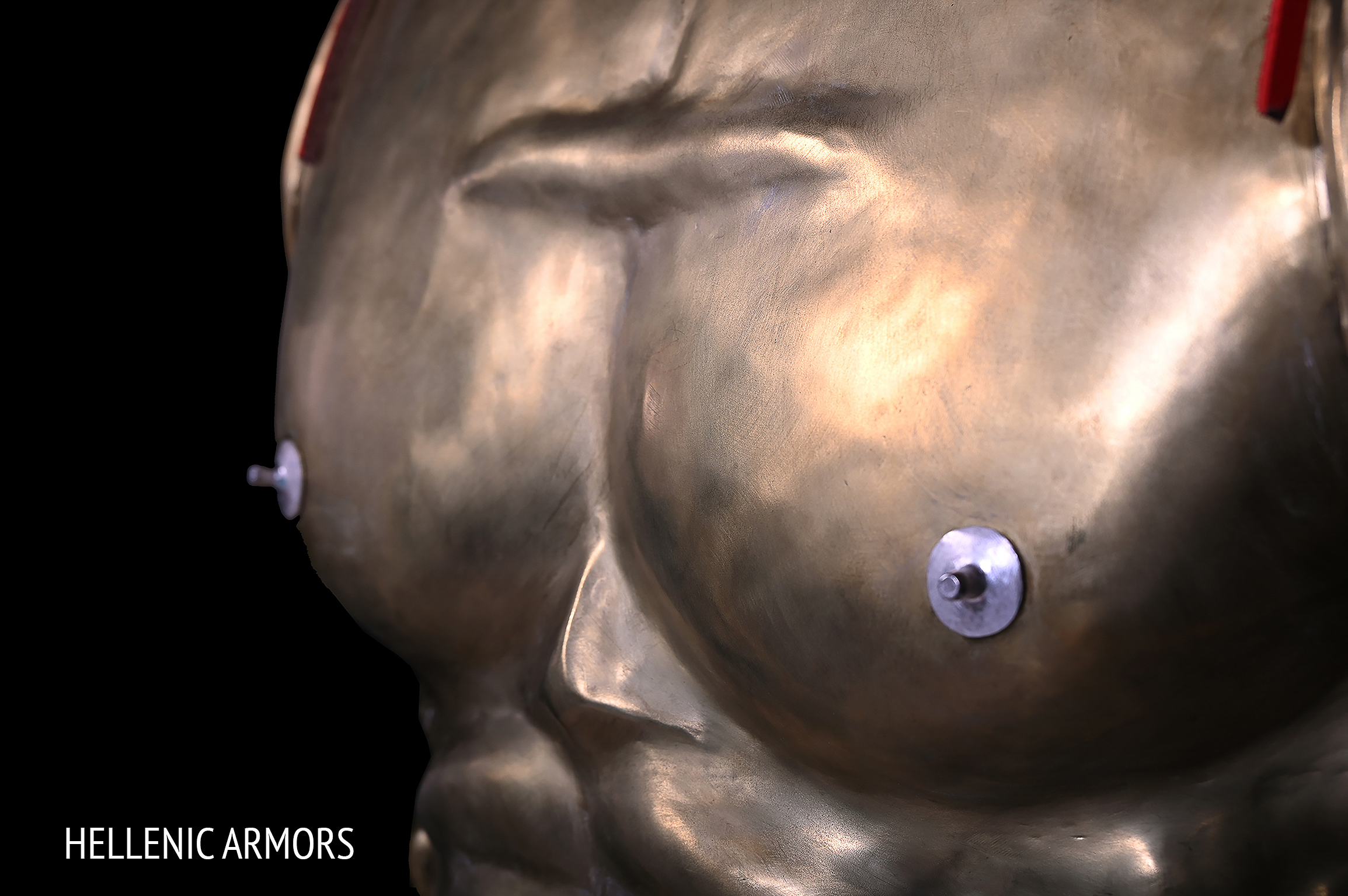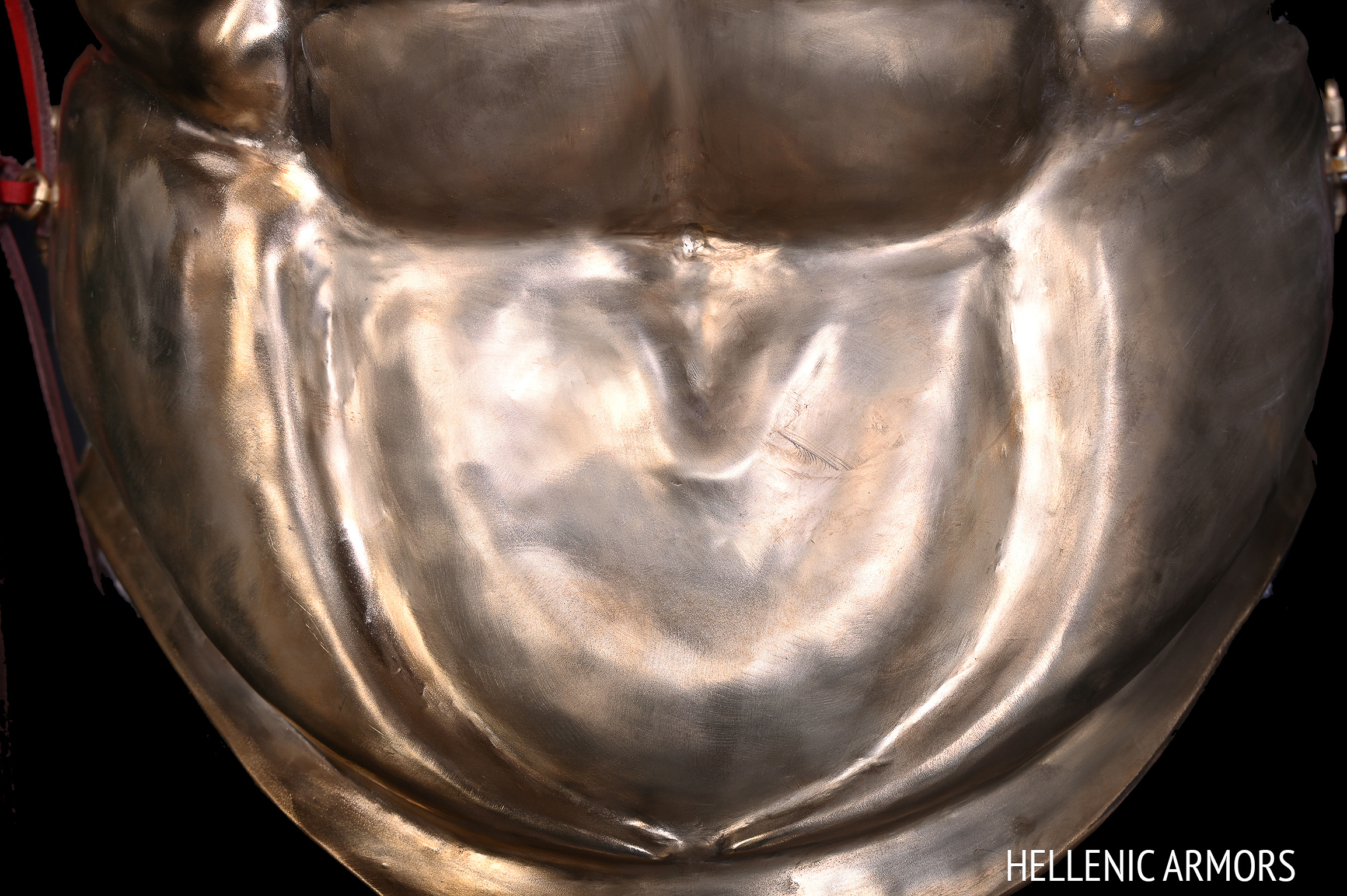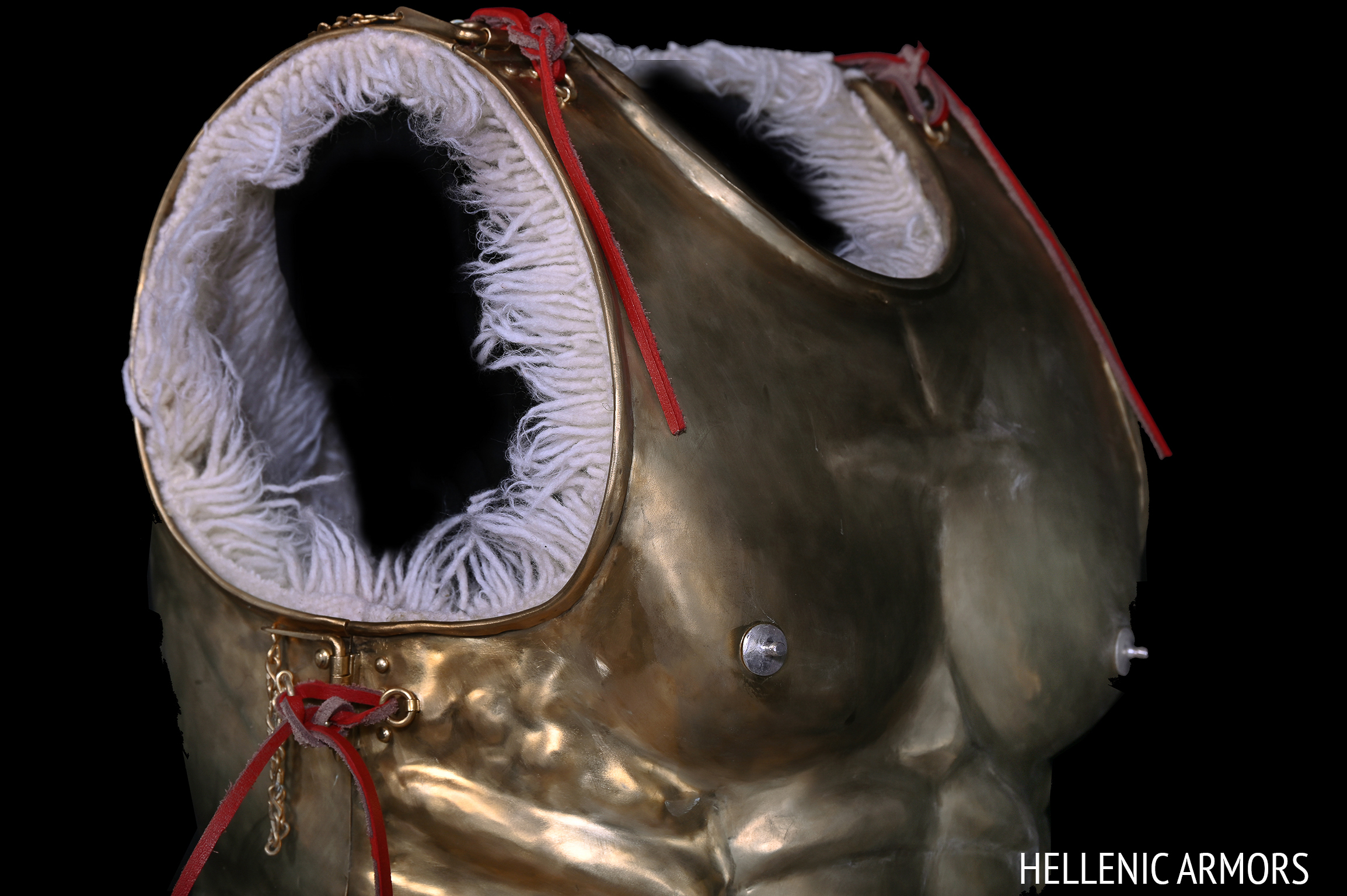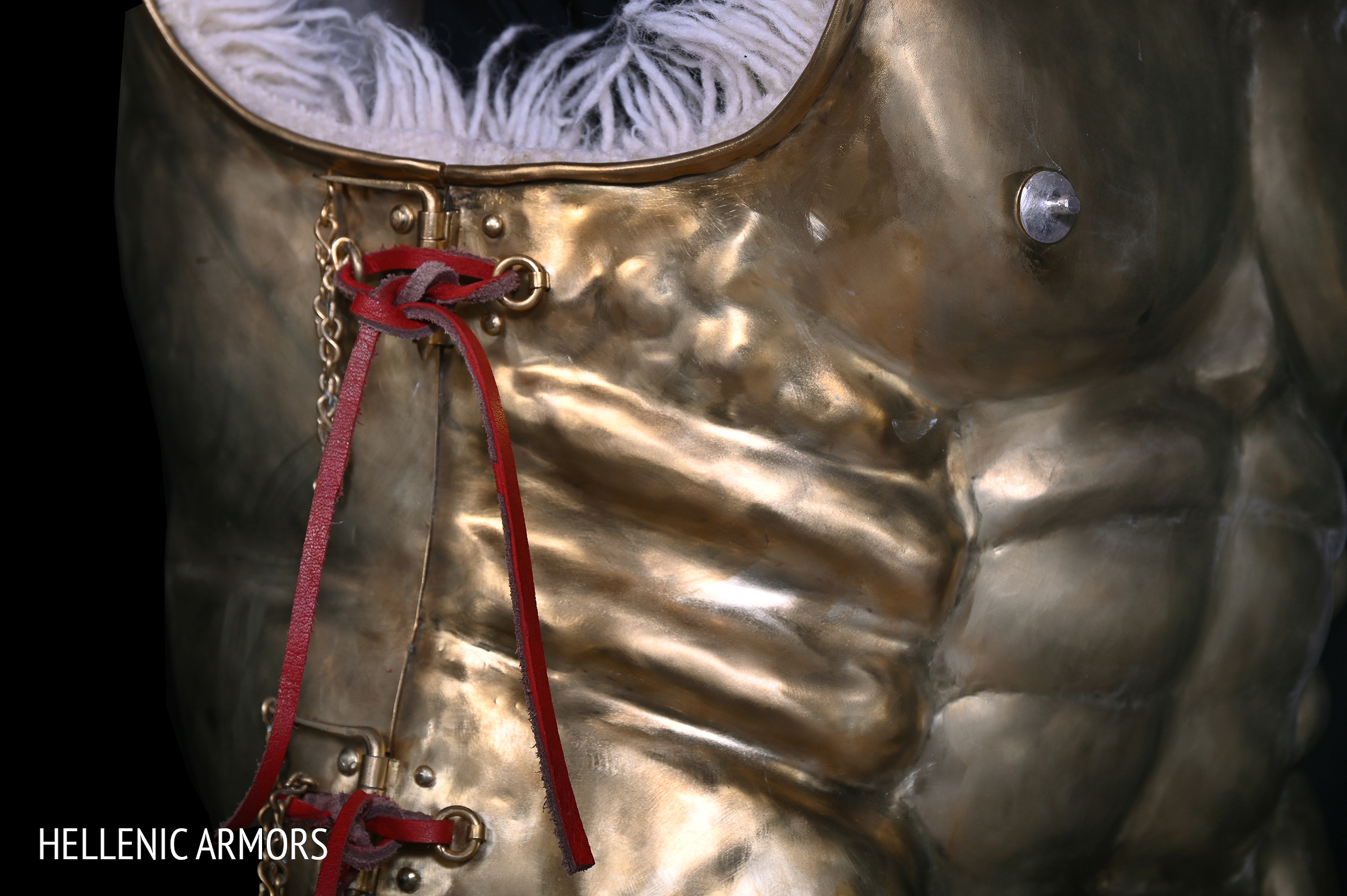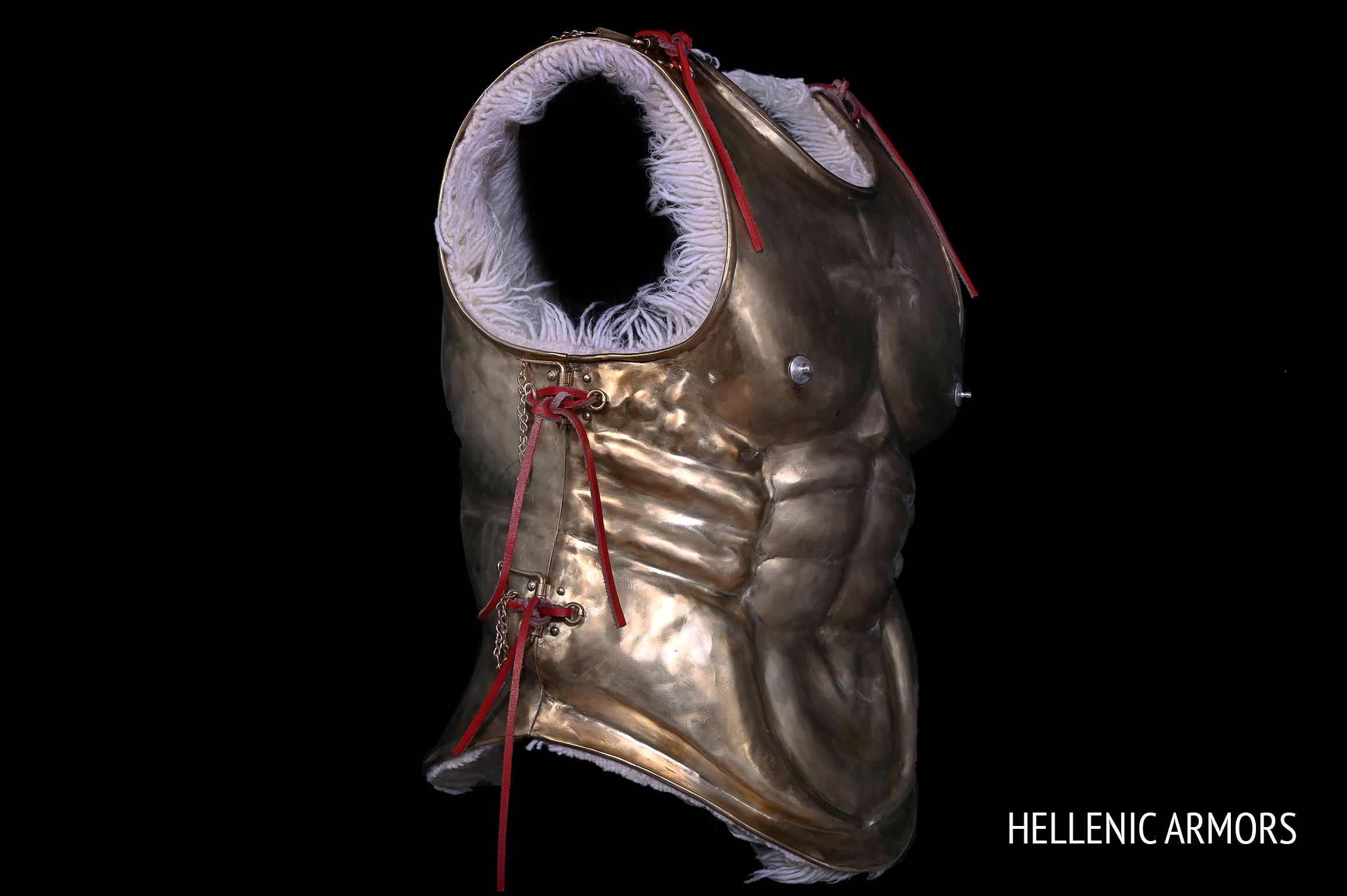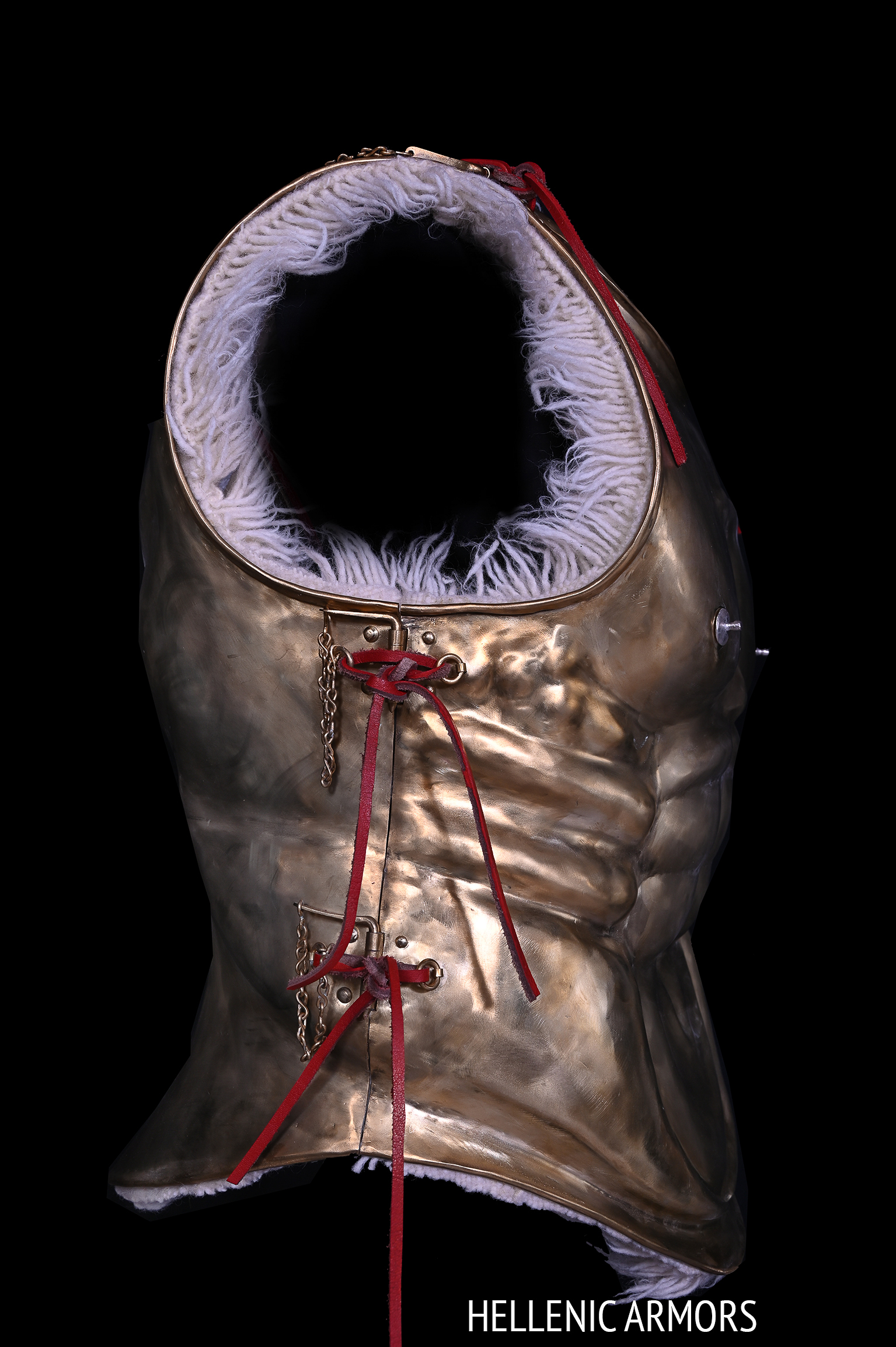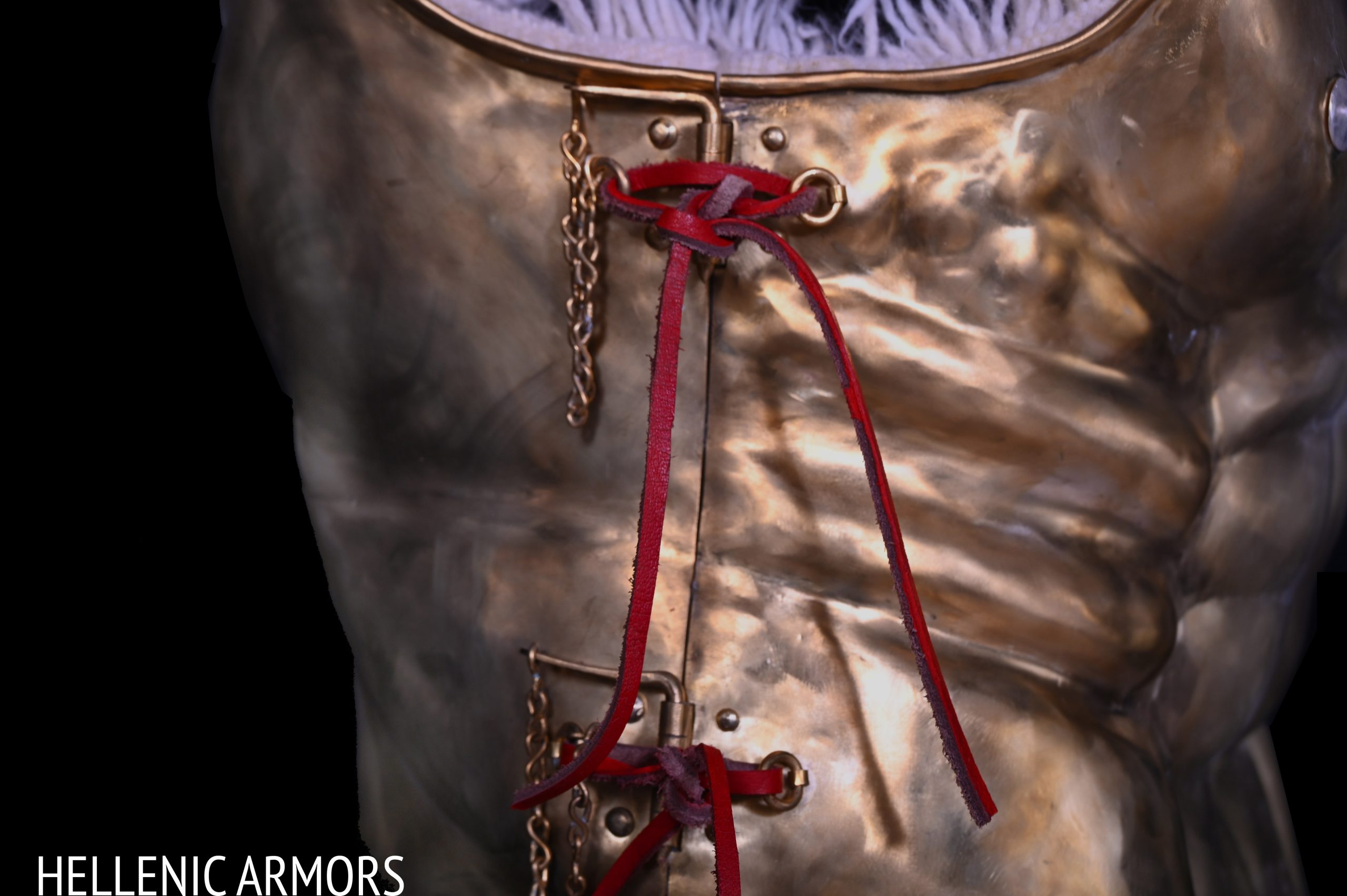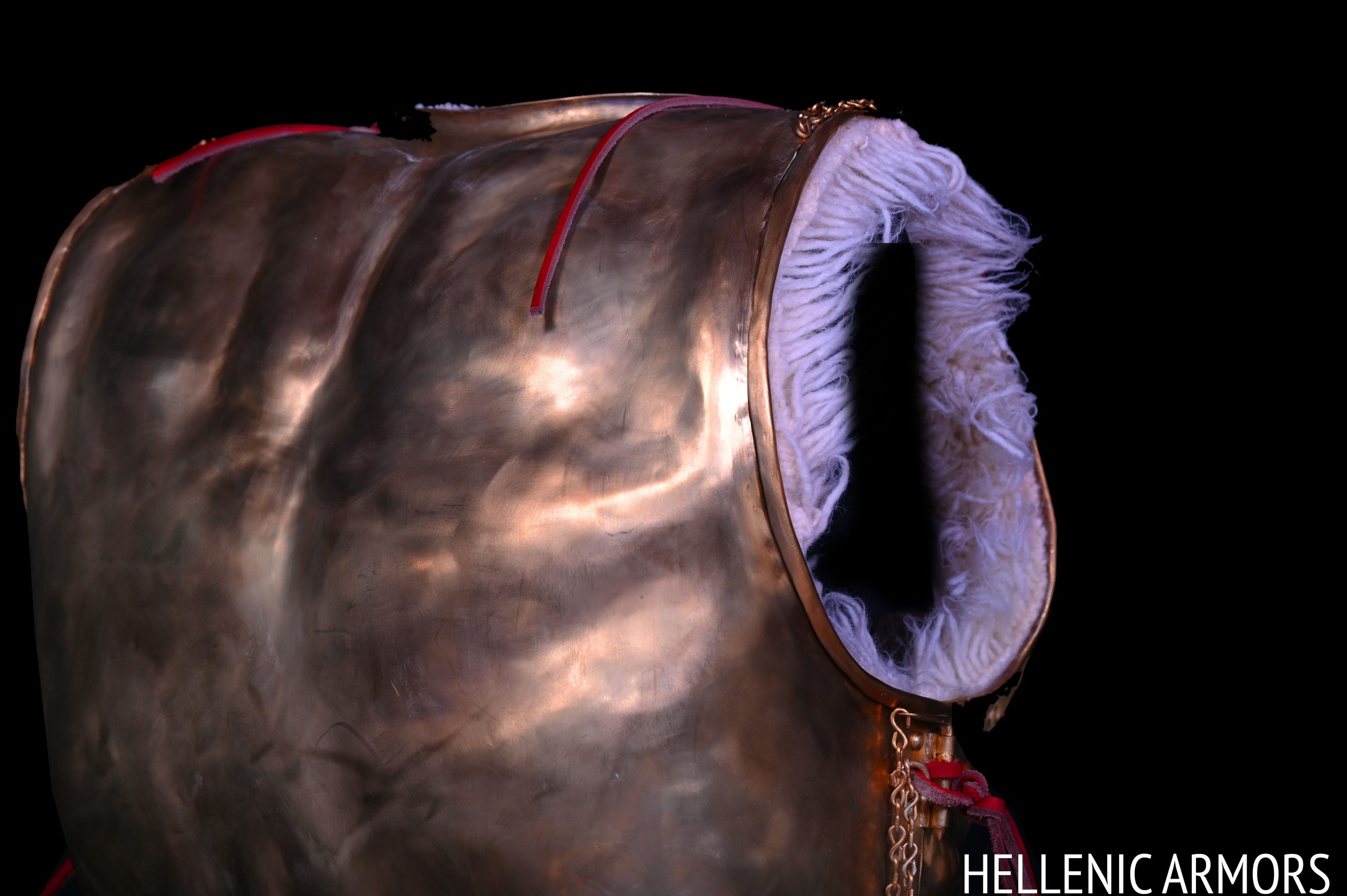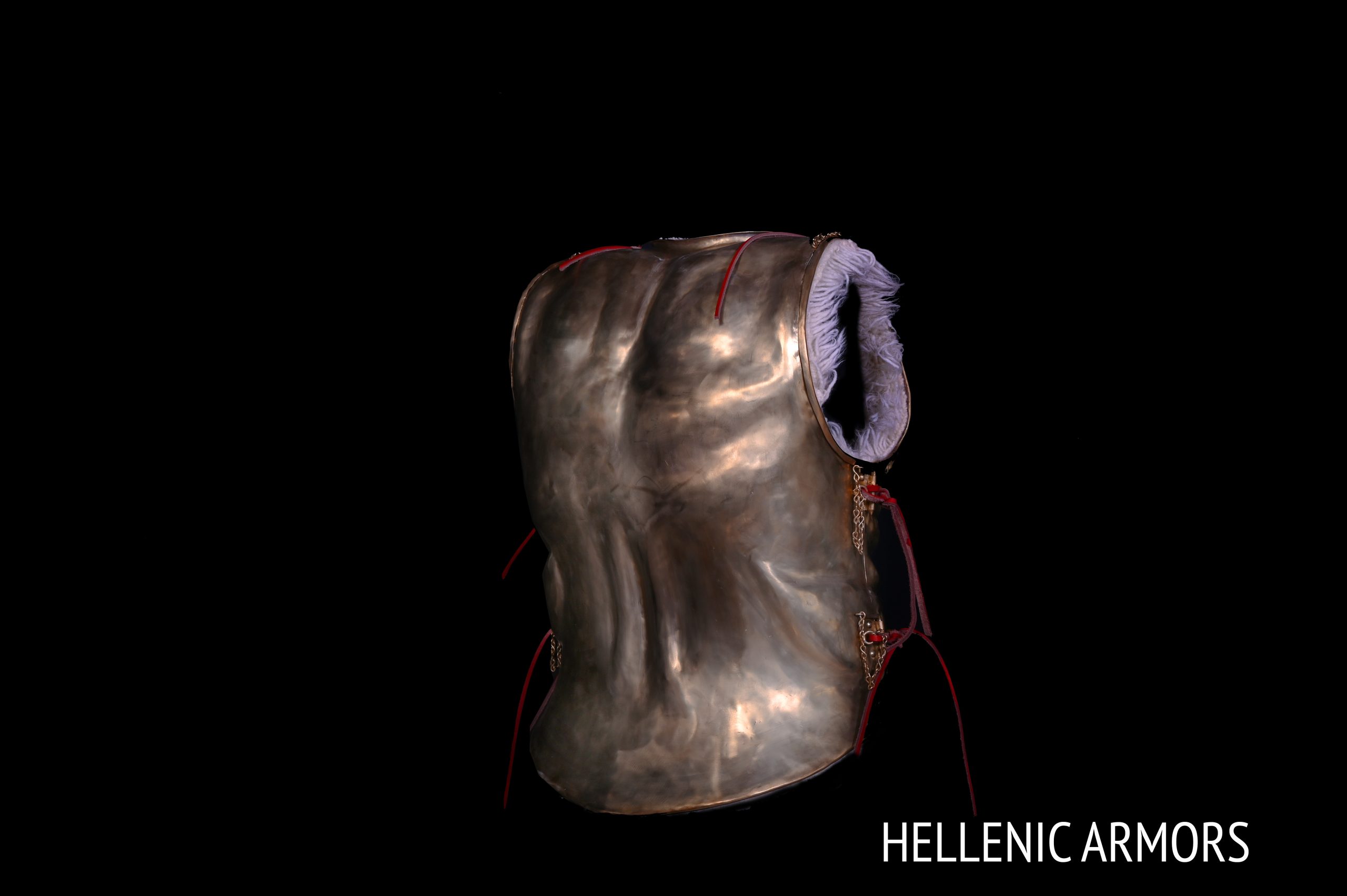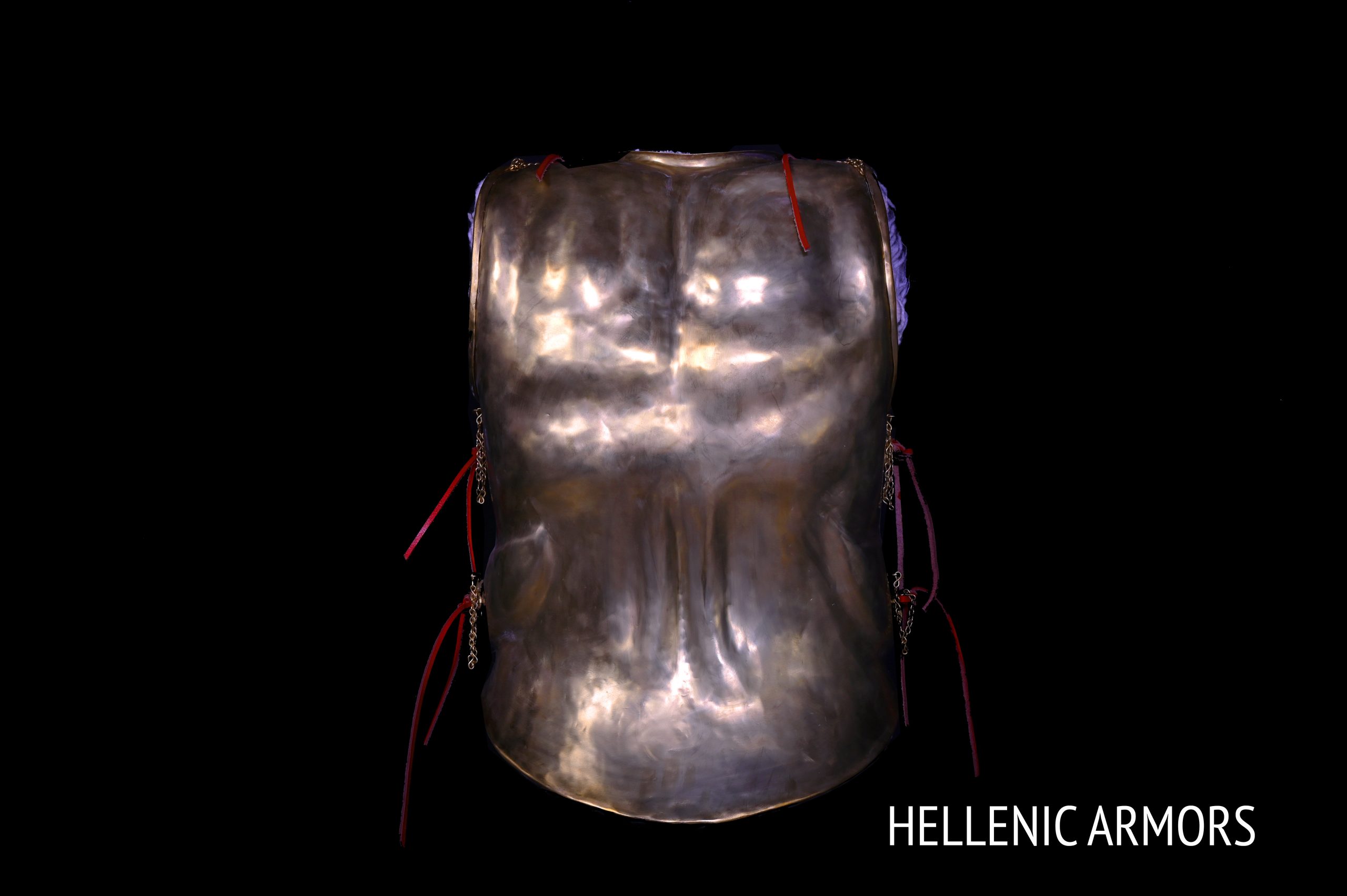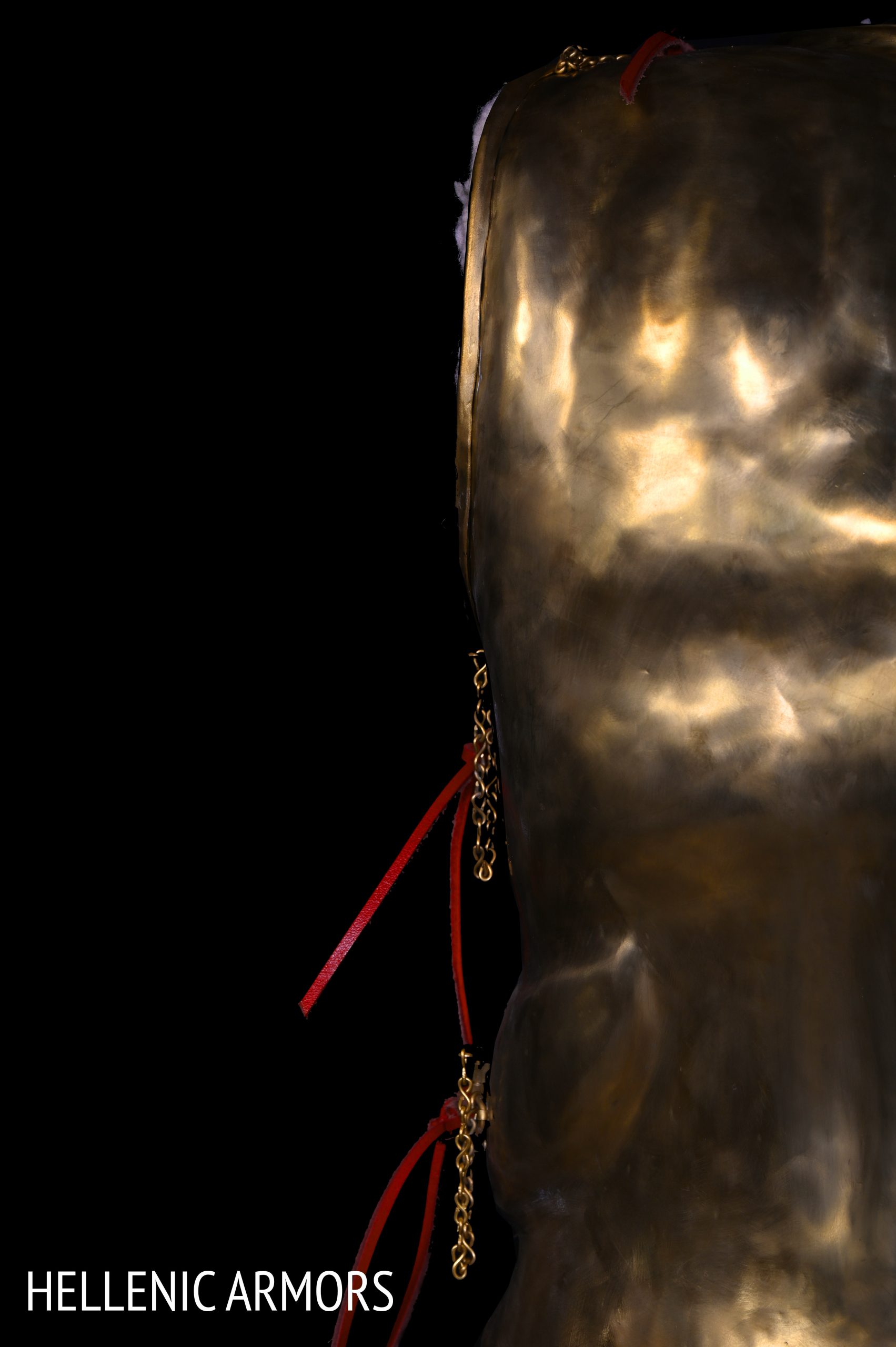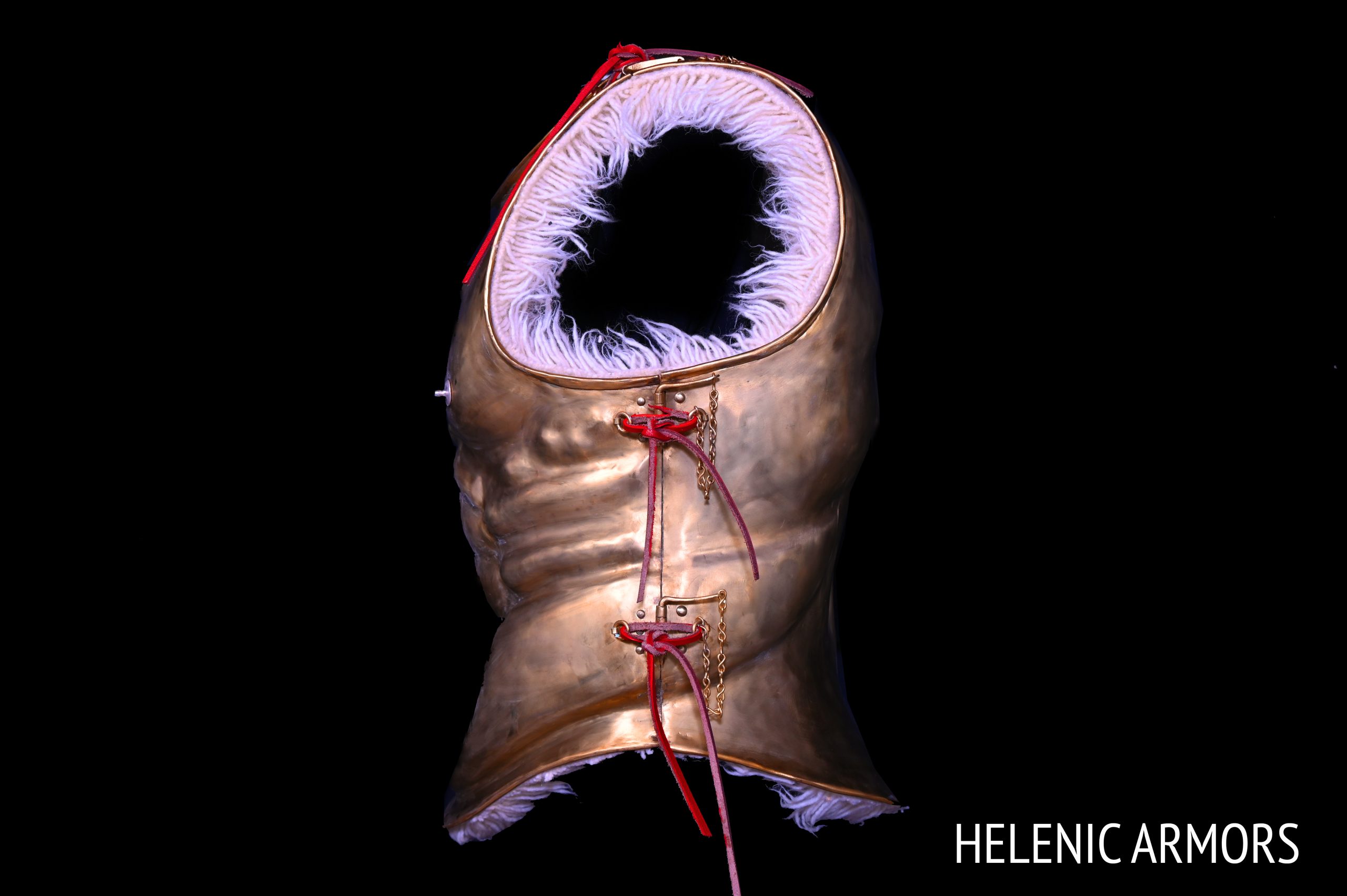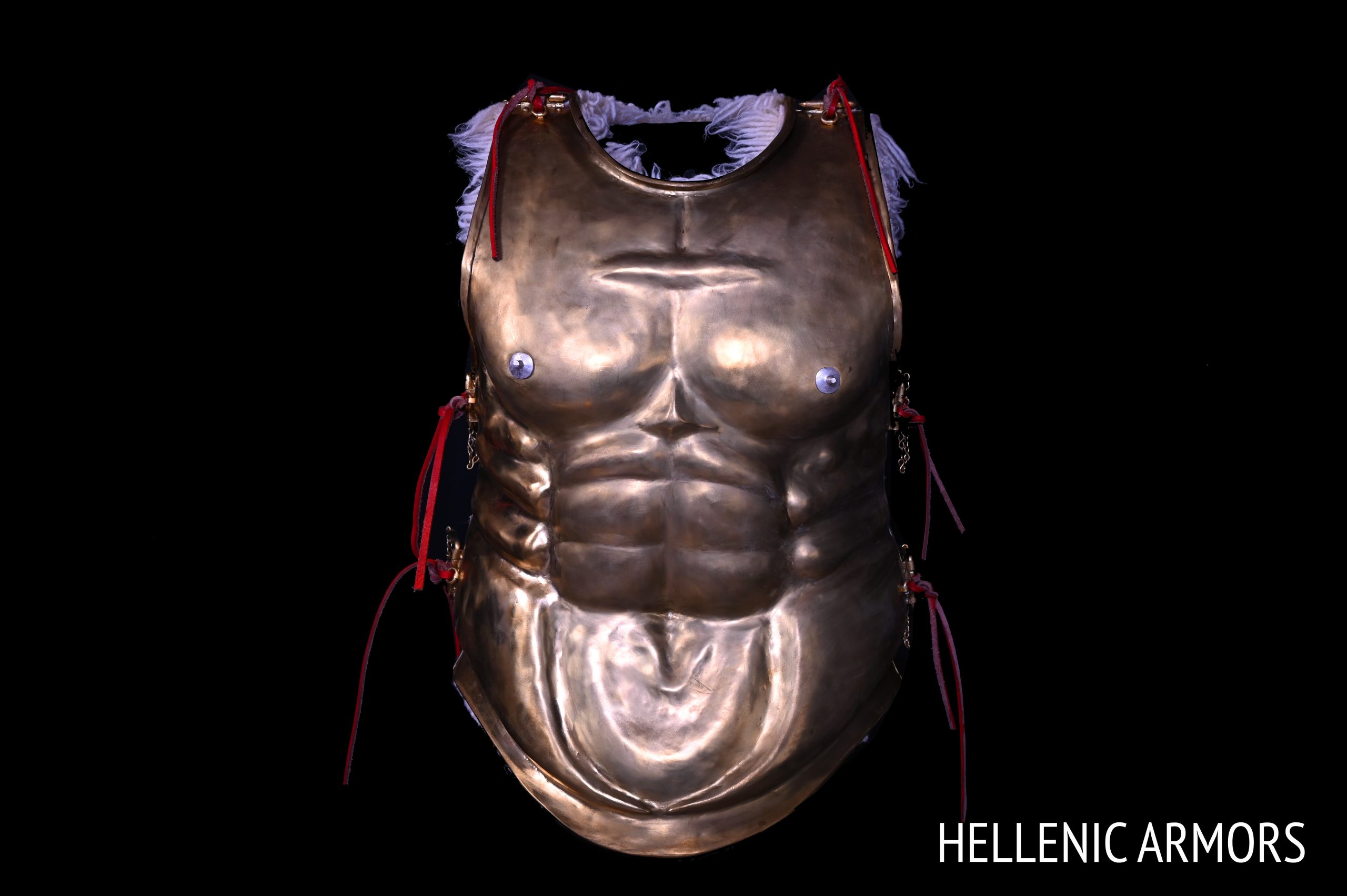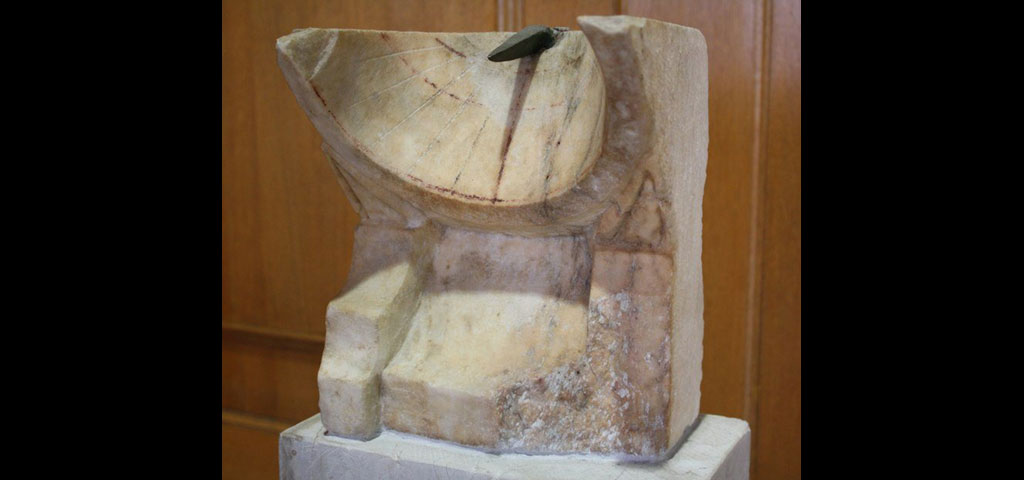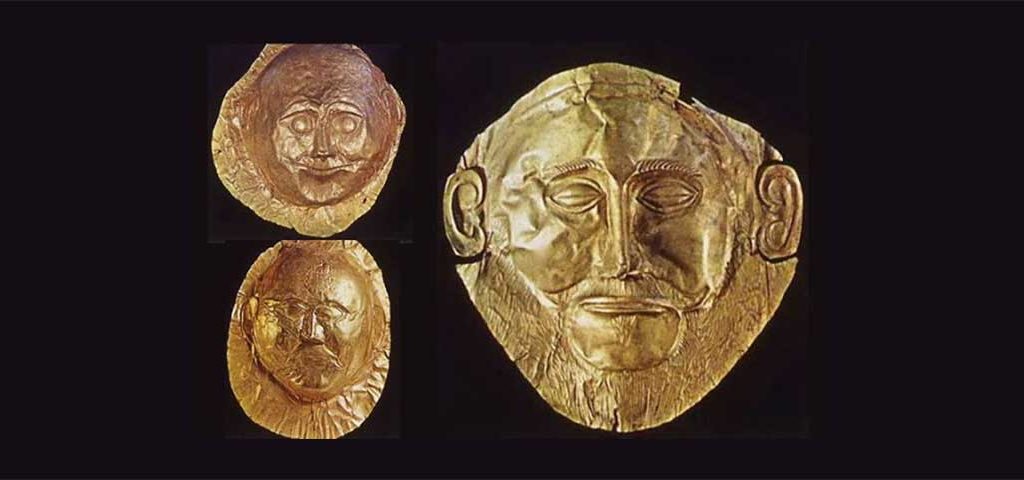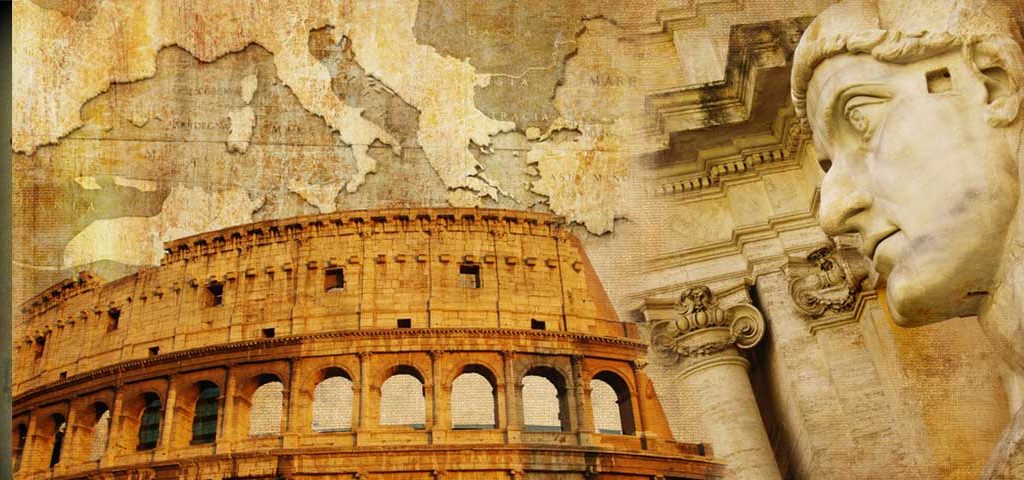Ancient Greek Armors
“Hercules” muscle armor
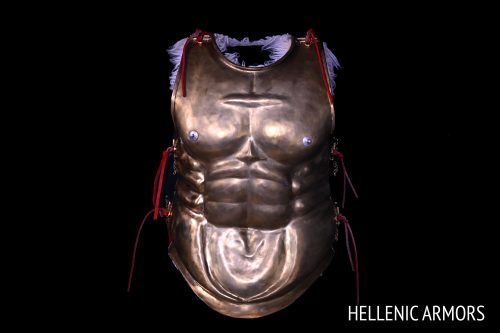
The muscle cuirass is inspired by the famous statue of “Farnese Hercules” which was excavated in the Baths of Caracalla in Rome and dates back to 216 AD , made by Greek sculptor named “Glykon”. It is a marble copy of an older classical bronze statue attributed to sculptor Lysippos (4th century BC,Sicyon) himself or one of his students.The marble statue unearthed in 1546 and today is displayed at the Archaeological Museum of Naples (Museo Archeologico Nazionale). It represents Hercules carries in his right hand, (behind his back) the apples of the Hesperides after the killing of the guardian dragon,typically completing the last of his twelve labors.
The statue is oversized, with a height of 3.17 meters. It is characterized by intense muscularity, which reflects the physical size and superhuman strength of the Hero. All muscles are distinguished by their strength, shape and size.
The muscle cuirass attempts to mimic the basic anatomical elements of the torso of marble Hercules incorporating them to the bronze plates through out hot forging techniques. The thorax is being consisted from the front and dorsal pieces which are joined together by means of six pairs of hinges (“swivels”), four pairs in the lateral sides and two pairs in the shoulder area.
He bears all the anatomical elements of a robust male body: muscular pectoral muscles, fleshy frontal and lateral abdominal and distinguished “Apollonian endings”. The dorsal plate is also characterized by strong musculature and the characteristic sigmoid development of an athletic male back. The nipples are made of cast silver. The inside surfaces have been covered with white thick sheepskin.
A work that encapsulates the values of traditional Greek bronze art. It is dedicated to one of the most central heroes of Greek Mythology who continues even today to inspire generations of Greeks and non-Greeks alike.




